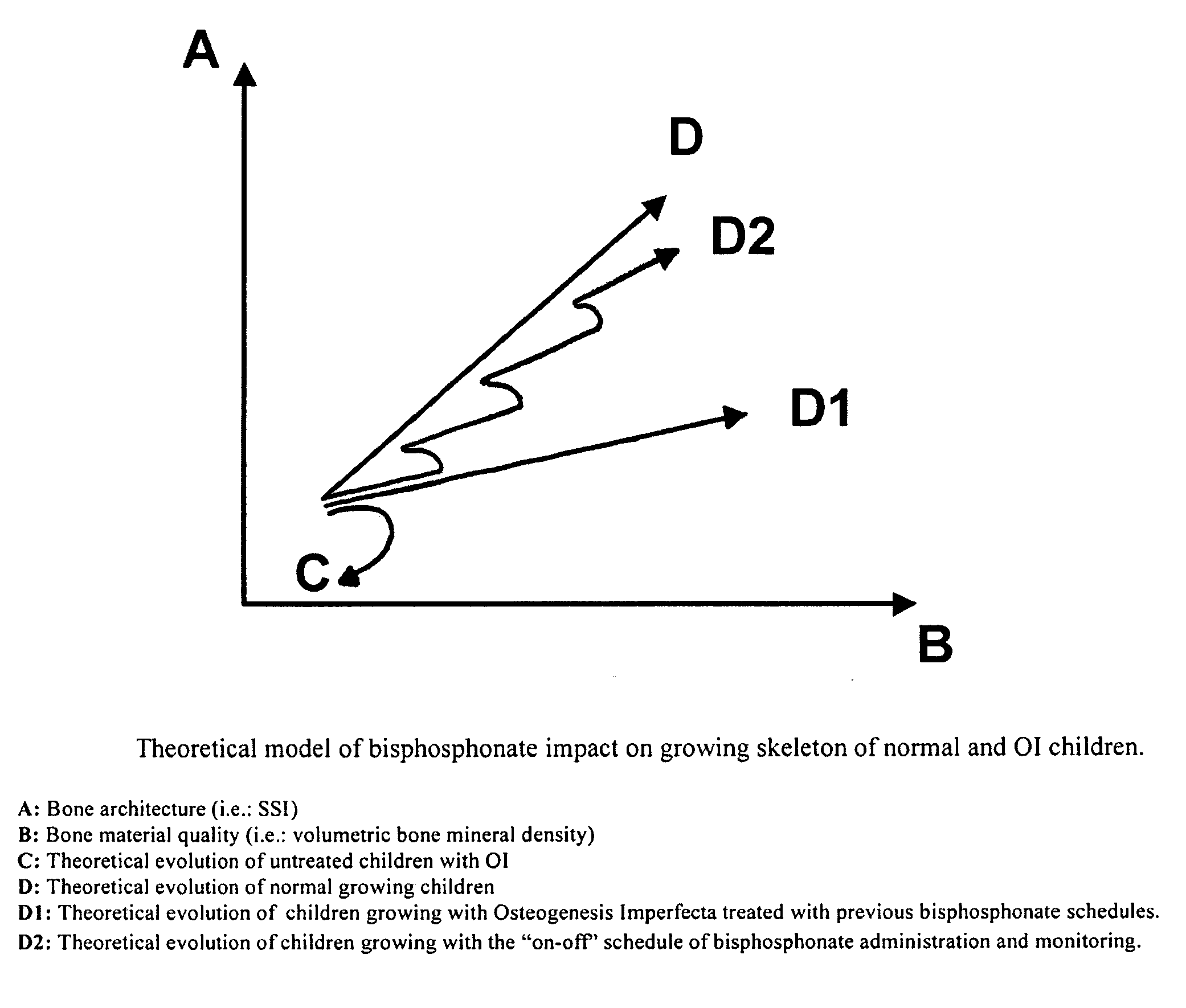Use of bisphosphonates for the treatment of osteogenesis imperfecta
a technology of osteogenesis imperfecta and bisphosphonates, which is applied in the field of use of bisphosphonates for the treatment of osteogenesis imperfecta, can solve the problems of high extra-osseous morbidity and mortality rate, difficult recoupment, affecting growth and survival, etc., and achieves the effect of avoiding prescription errors and increasing complian
- Summary
- Abstract
- Description
- Claims
- Application Information
AI Technical Summary
Benefits of technology
Problems solved by technology
Method used
Image
Examples
example i
Specific Improvement of Cortical Mineral Density Administration of Bisphosphonates
[0103]Four children with Osteogenesis Imperfecta type III and one type IV, aged two and fourteen at the beginning of this study (6 and 17 at the end of continuous exposure to bisphosphonate), and having suffered from 4 to 79 fractures in different parts of the skeleton, were treated with disodium pamidronate for 2.5-4 years, following the “continuous” type scheme. The doses were adjusted to the patient's condition with a mean of 3.5 mg / Kg of body weight / day by oral administration, or 20 mg per dose, every 3-6 months, by intravenous administration in one of the cases. During bisphosphonate administration, it was possible to verify the reduction of the osseous metabolic turnover, according to the decrease of the basal figures of the biochemical markers of osseous resorption (mainly urinary hydroxyproline / creatinine) and osseous formation (mainly of total serum alkaline phosphatase and osteocalcine). Subs...
example ii
Specific Increase of Osseous Stability During the Period of Interruption in the Administration of Bisphosphonate
[0107]The administration of bisphosphonates (cases A and B) was interrupted in two of the four children. In new tomographic exams, 4-11 months post-bisphosphonates the improvement in the stability rate is observed, despite a slight concomitant deterioration of the cortical mineralization (FIG. 4). This better index can only be obtained by the expansion of sectional momentum of inertia, as an expression of a better bone architecture. In fact, when the administration of bisphosphonate is interrupted, the endoestal mineral density decreases approximately 2-4% at 3-9 months, showing again a wide interindividual variation in the loss pace. Consequently, the tomographic follow up is performed periodically in order to prevent that the osteopenia of the post-bisphosphonate cortical bone rises above 10% thus affecting the architectonic improvement achieved and indicating the conven...
PUM
| Property | Measurement | Unit |
|---|---|---|
| body weight | aaaaa | aaaaa |
| volumetric mineral density | aaaaa | aaaaa |
| bone volumetric mineral density | aaaaa | aaaaa |
Abstract
Description
Claims
Application Information
 Login to View More
Login to View More - R&D
- Intellectual Property
- Life Sciences
- Materials
- Tech Scout
- Unparalleled Data Quality
- Higher Quality Content
- 60% Fewer Hallucinations
Browse by: Latest US Patents, China's latest patents, Technical Efficacy Thesaurus, Application Domain, Technology Topic, Popular Technical Reports.
© 2025 PatSnap. All rights reserved.Legal|Privacy policy|Modern Slavery Act Transparency Statement|Sitemap|About US| Contact US: help@patsnap.com



